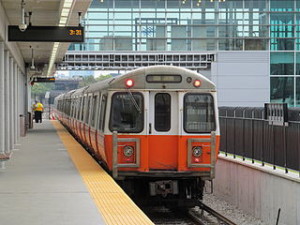Cycling in Extreme Weather: Summer Edition
 I was in New York last week to join my friend Candy to help her prepare for the New York City Triathlon next Sunday. In addition to jogging through Central Park and swimming in a local pool, we also rode our bikes the whole 32-mile perimeter of Manhattan in two hours via the Manhattan Waterfront Greenway. Candy is a semi-professional athlete and competes in triathlons and marathons all the time. Needless to say, she did swimming, running and cycling way better than me! About five minutes into our ride, Candy was cycling so fast and so far ahead of me that I didn’t see her for another 40 minutes.
I was in New York last week to join my friend Candy to help her prepare for the New York City Triathlon next Sunday. In addition to jogging through Central Park and swimming in a local pool, we also rode our bikes the whole 32-mile perimeter of Manhattan in two hours via the Manhattan Waterfront Greenway. Candy is a semi-professional athlete and competes in triathlons and marathons all the time. Needless to say, she did swimming, running and cycling way better than me! About five minutes into our ride, Candy was cycling so fast and so far ahead of me that I didn’t see her for another 40 minutes.
The day of our cycling it was 90 degrees and halfway through the ride, it started raining heavily. Candy is also a native of Arizona, where she regularly practices sports in extremely hot weather. I am more of a recreational and commuter cyclist, but I also have experience dealing with rough weather. After our ride we shared the following conclusions with each other about how to best go about cycling in the summer.
Gear: We didn’t know it was going to rain, so we didn’t come prepared with any rain gear. This turned out to work out fine for us since the water helped us cool down. If you do plan to wear rain gear, you will want to wear light gear with moisture-wicking properties that ventilate well. It is natural to want to wear a lot of layers during rain, but you also have to take into consideration that you will be sweating a lot in the heat. Even in good weather days, it is better to wear less. You will feel more comfortable if you are wearing less in order to regulate your temperature.
Sunscreen: Wear lots of it on exposed parts of your body, especially legs and knees, as they will be exposed the most.
Hydrate: Drink lots of water before, during and after your ride. If you don’t bring water with you, make sure you are riding near water fountains or places that sell water. After my rides, I usually drink a concoction of water, lemons and aloe vera juice, which is very replenishing.
Chamois Cream: I don’t really use chamois cream since I’m not a competitive cyclist, but Candy recommends using it for longer rides. Basically the cream is used to prevent friction between your clothing and body. Excessive chafing can cause abscess, a bacterial infection which is certainly not fun.
Timing: Like I have mentioned before in my summer running post, it is best to cycle either during the early mornings or late evenings to avoid the heat. If you live in the city, the roads have less traffic at those times and, thus, easier to navigate. Also, if it is dark, don’t forget your LED lights.
Glasses: I wear prescription Transitions glasses full time, which are great during a sunny day, but not so much when it starts raining. Luckily during our ride, it didn’t rain too much to impede my sight. Normally, if I do cycle in the rain, sometimes I wear a cap under my helmet to prevent most of the rainwater from getting into my eyes.
Road Travel: Cycling in urban areas are already hazardous, but when you add rain, it can be a nightmare. You have to worry more about oil slicks and not crashing into other cars or even cyclists. I try to ride at a slower pace and avoid hills. At all costs try to avoid wet leaves and grass, painted road markings, puddles and manhole covers, Braking is also a concern and grip will be affected a great deal when you turn corners. It would also be a good idea to lower your tire pressure, get fenders and put on bright LED lights so opposite car traffic can see you.
Regardless of the weather, have fun cycling this summer. I know I will!
